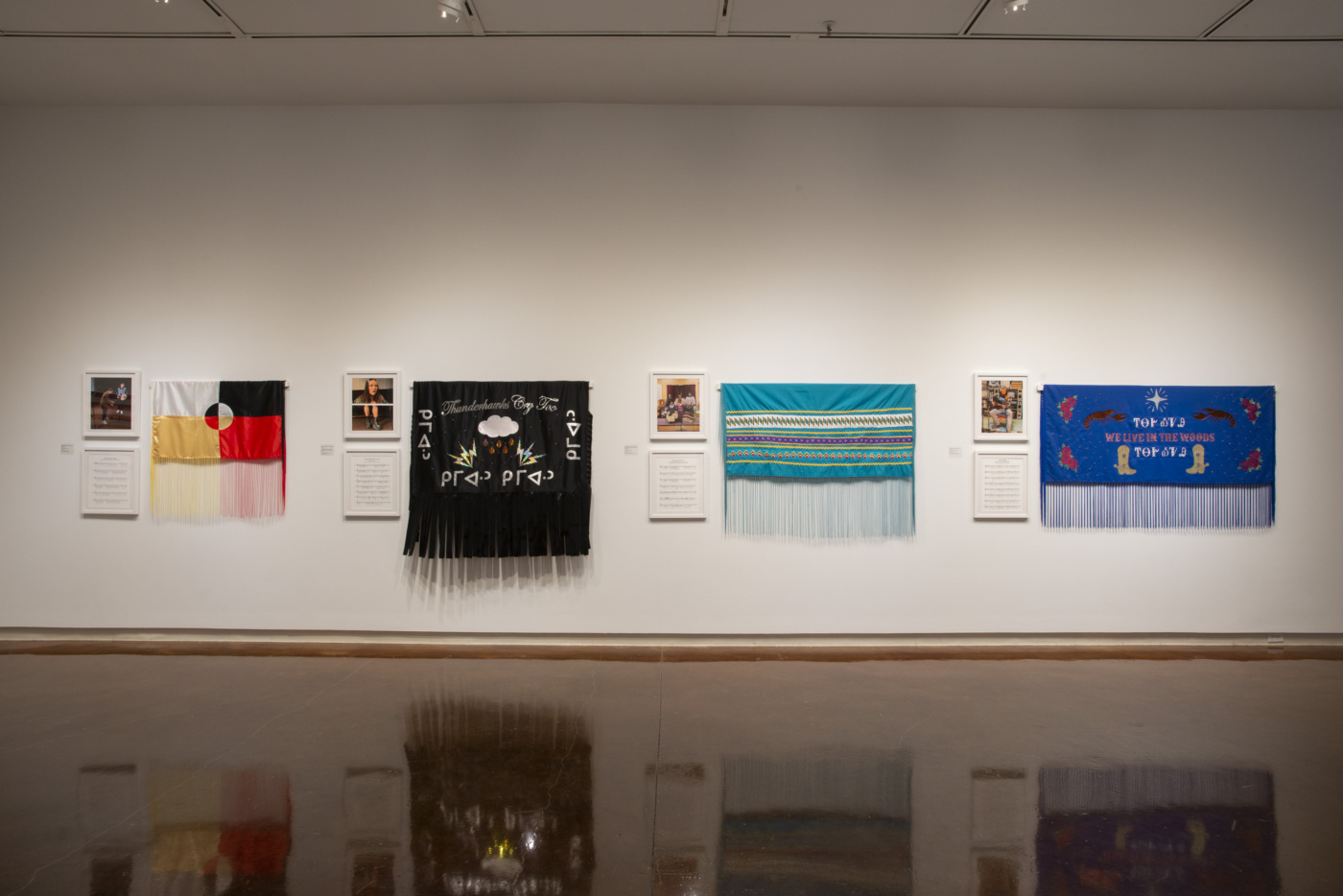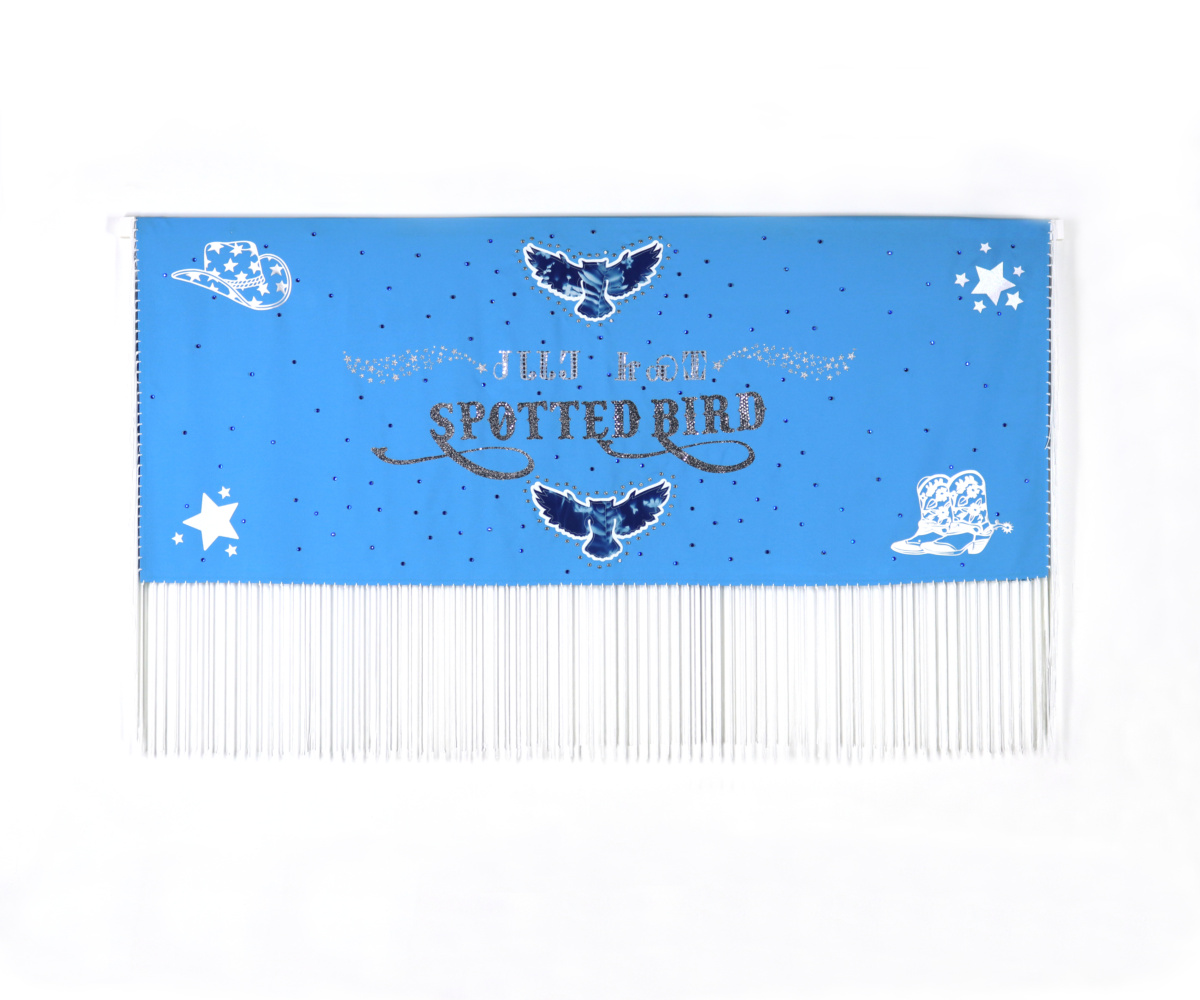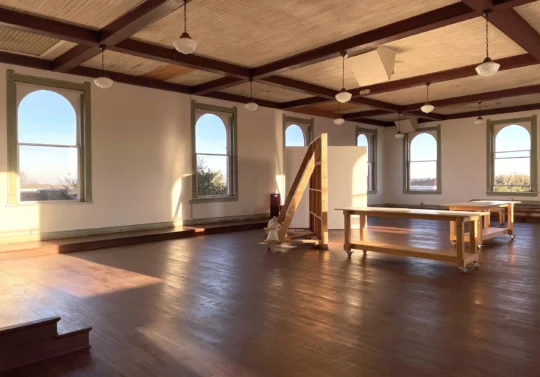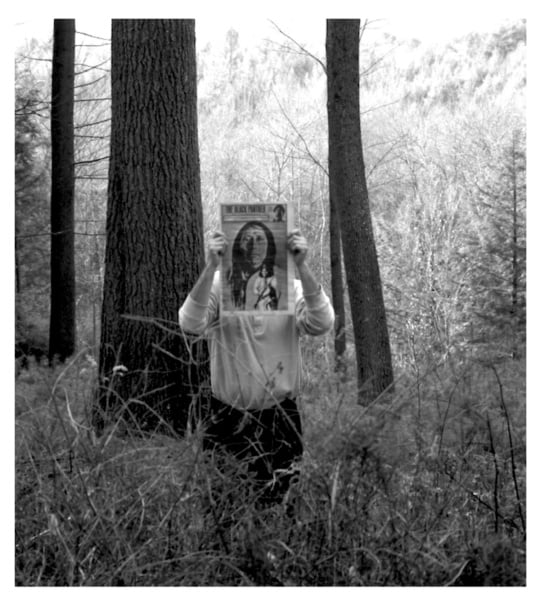
The stark white walls at the Halsey Institute of Contemporary Art at the College of Charleston are glimmering. On them hang nine handmade Cherokee shawls constructed by Native American (Cherokee/Muscogee) artist and composer Elisa Harkins, for her solo exhibition Teach Me a Song. The exhibit centers on Indigenous song exchange and language revitalization among Indigenous groups in the United States and Canada.
Each shawl is uniquely sewn, embroidered, and embellished with metallic fabrics, sequins, rhinestones, and ribbons. Next to each handmade textile, an intimate photograph of the Indigenous performer is placed beside black-and-white printed sheet music. Most are songs that for the first time have been transcribed note by note on paper after surviving solely on oral tradition.
The sound of guitars strumming, singing, and reverberating hand drums echo throughout the exhibit. One can take a seat in front of a full wall projection of performances by Indigenous performers, including the White Buffalo Singers, a group of Blackfoot teens; Cherokee singer-songwriter Kalyn Fay, and Osage elder Louis Gray. “Each one is powerful, striking,” says Harkins. “Each has so much history and so many stories.”

Harkins was inspired to pursue a project focused on language revitalization within the Cherokee community and beyond following a studio visit with artist Wendy Red Star. “It led me down the path of language revitalization,” says Harkins. “I started making my own regalia in my artist studio while I was in school and have continued that since.” Harkins began teaching herself the Cherokee language, enrolling in online classes and with teacher Don Tiger in 2018, who taught her Muskogee (Creek) hymns and assigned her to learn them as homework.
“I learned about the long tradition of song trading that isn’t practiced anymore,” says Harkins, who noted that she was inspired by the Sámi people of Norway and the Maori people of New Zealand. “I started thinking about how my work was focused on me being alone in my studio making songs, while also being interested in supporting other artists and making a platform for (them),” says Harkins.
To realize her work, Harkins traveled to connect with singers in different Indigenous communities through song exchange. On each visit, Harkins recorded a song on-camera, and taught a song off-camera for each exchange. She subsequently transcribed each song to sheet music and created a representative shawl that reflected each song and artist.

Cherokee singer-songwriter Kalyn Fay was filmed playing an acoustic guitar and singing in the Cherokee language to her song “Spotted Bird” about owls and their importance and symbolism to the spiritual world in their culture. Harkins created a shawl to represent the song that features an owl, rhinestones, and cowboy boots to symbolize Fay’s folk and country roots. Another eye-catching shawl was created for The White Buffalo Singers’ “The Grandmother’s Song”, a floral scarf that is embellished with over 3,000 rhinestones, as well as fabric representing the transgender flag, an ode to one of the members of the group.
Two performances of Elisa Harkins: Wampum ᎠᏕᎳ ᏗᎦᎫᏗ. at Spoleto Festival USA compliment the exhibition.“Wampum is used as a form of currency in the Cherokee culture, beads used as money,” explains Harkins. “Wampum belts symbolize a peacekeeping agreement for Indigenous people, and are a piece of Indigenous Futurism.” She explains that Indigenous Futurism weaves in the future and past through music, encouraging peace and respect through performance. Wampum ᎠᏕᎳ ᏗᎦᎫᏗ will incorporate influence from disco and electronic music, with singing in Cherokee, English, and Muscogee (Creek). “It starts off with electronic music, then comes to an end into Muscogee (Creek) hymns that are 200+ years old,” says Harkins.
This exhibition marks the first time the entirety of this project has been displayed, but for Harkins, the song exchange project is ongoing. “I’m excited to continue working on it and showing the diverse people and voices and songs that indigenous people have,” says Harkins.





